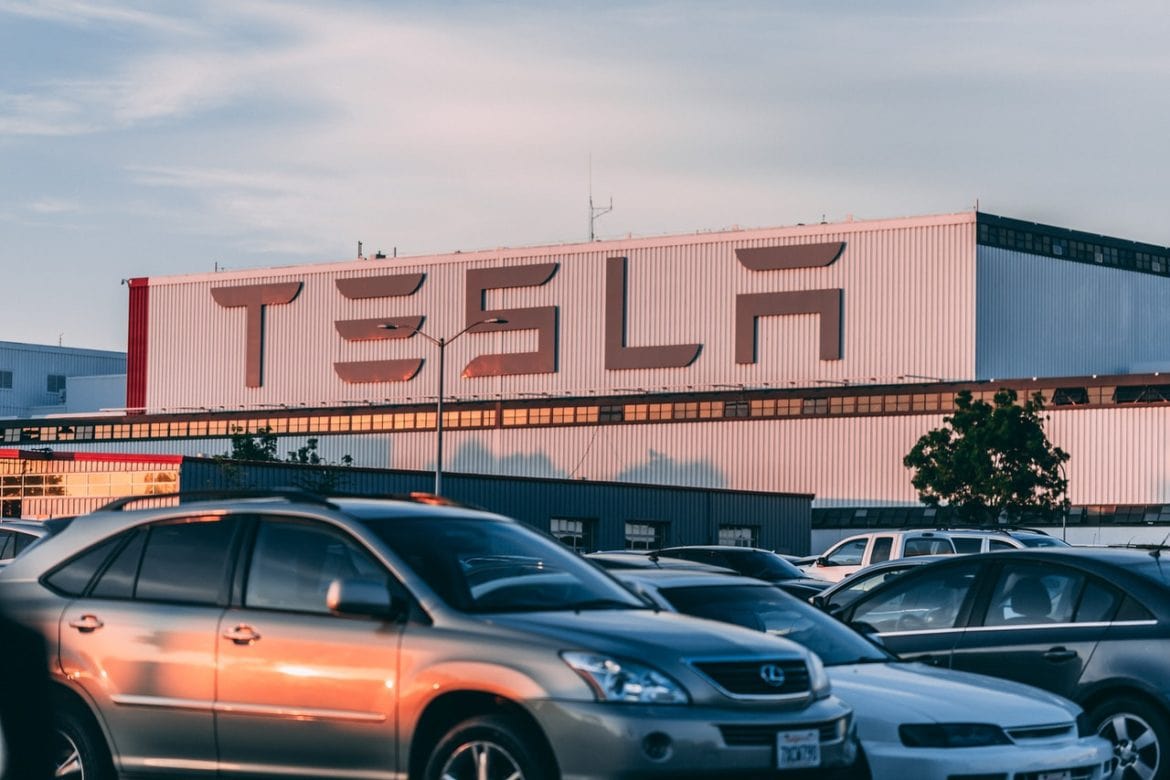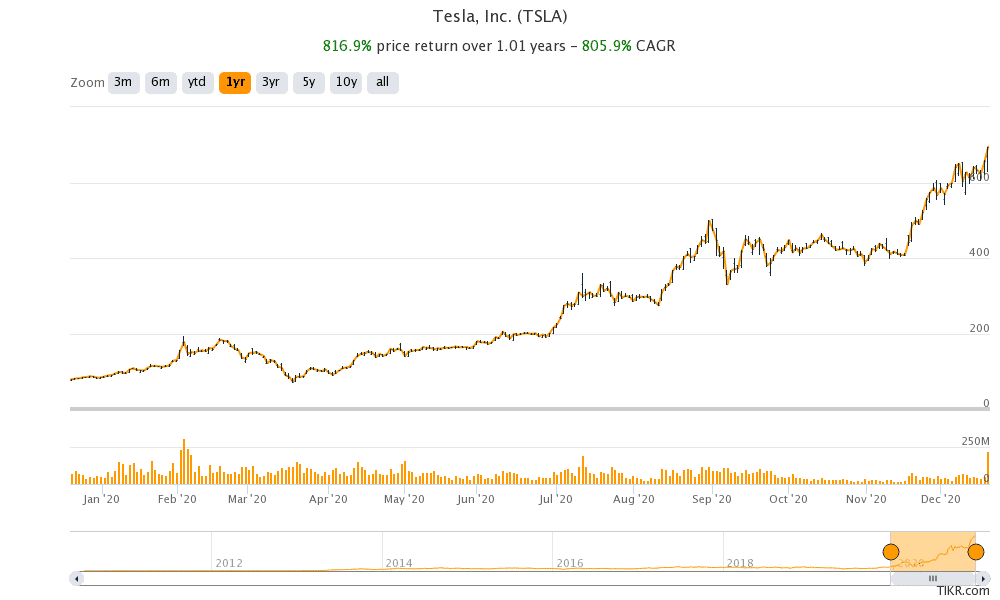
Tesla (TSLA) shares were trading lower in the US premarket today, although they have since recouped most of the early overnight loses in volatile price action. The stock is set to enter the S&P 500 index at the open.
Joining the S&P 500 is a prestigious event for any company. The S&P 500 is the world’s most popular and indexed stock exchange. Almost $5 trillion of assets are indexed to it: these passive funds simply buy and hold all the S&P 500 constituents according to their weighting.
Tesla joins the S&P 500
Tesla is the largest company ever to join the S&P 500. Its market capitalisation is over $600 billion making it bigger than Berkshire Hathaway, which held the previous record as the biggest company to join the S&P 500 when it joined in 2010. Meanwhile, while Berkshire Hathaway stock return is trailing the S&P 500, Tesla is up almost 700% for the year and is the best performing S&P 500 stock. Tesla’s CEO Elon Musk is now the second-richest person in the world, having displaced Bill Gates from the position.
Some stocks could see selling pressure
Tesla becomes the fifth-largest component of the S&P 500 with a weighting of 1.69%. According to Greg Sutton, head of portfolio trading at Citadel Securities, passive funds would have to buy $70 billion worth of Tesla shares on Monday to replicate the index. This would mean that these funds would have to sell shares in other S&P 500 companies.
“Adding it all at once creates more stock that needs to be sold for the funding trade, which potentially creates more impact — especially in less-liquid components of the S&P 500,” said Sutton referring to S&P 500 Index Committee’s decision to add Tesla shares in one single tranche. He added, “The market can digest it, but there is the potential for liquidity impact.”
Funds would want to minimise tracking error
Kevin Muir of the MacroTourist blog estimates that Johnson & Johnson, Procter & Gamble, and Berkshire Hathaway would see the heaviest selling pressure as passive funds rebalance their holdings. Tesla’s inclusion into the S&P 500 is a major event for passive funds tracking the S&P 500. Given the massive volatility in the Tesla shares, fund managers will not want to delay adding the shares as it would lead to a higher tracking error — a term used to describe the return differential between the index and the funds tracking it. A lower tracking error is good for index funds.
Passive funds would buy Tesla
“They’re going to be pulling out all the stops,” said Ben Johnson, director of global ETF research at Morningstar Inc commenting on how passive funds would react to Tesla’s S&P 500 inclusion. He added, “They are not going to be taking any one singular approach, not using any one tactic in isolation, but using all of the different tools that are available to them to try to again leave no footprint and minimise the cost to their investors.”
How would Tesla’s inclusion into the S&P 500 impact the index performance?
Tesla is among the most expensive companies ever to join the S&P 500. According to Howard Silverblatt, senior index analyst at S&P Dow Jones Indices, the S&P 500’s 2021 PE multiple would rise to 22.6 from 22.3 after Tesla’s inclusion. According to Goldman Sachs estimates, if Tesla had been part of the S&P 500 since the beginning of the year, the index’s 2020 returns would have been higher by 2% this year.
Meanwhile, since Tesla does not pay a dividend and might not start paying one in the near future, the S&P 500’s dividend yield would fall by 3 basis points to 1.53% according to Silverblatt.
Can Tesla shares continue to rise?
Tesla’s rally in defied all odds this year. Short sellers have lost billions of dollars betting against the company and long time Tesla short Jim Chanos recently admitted that he has trimmed his short positions in the company. Analysts have a divergent view of Tesla shares. While JP Morgan expects the stock to crash to $90, Ark Investment, a long time Tesla bulls, see the shares more than doubling to $1,400.
“If you look at a company like Tesla, they’re single-handedly in a way sort of making that curve, because they’re the largest producer of batteries,” said Ark Investment analyst Tasha Keeney. On the other hand, JP Morgan analyst Ryan Brinkman said: “Tesla shares are in our view, and by virtually every conventional metric, not only overvalued, but dramatically so.”
Competition in the electric vehicle industry
Meanwhile, the next couple of years will be crucial for Tesla. This is when the company’s Berlin and Texas Giga factories begin production and it will begin to face competition from new electric vehicle models launched by legacy automakers.
Incidentally, last week while S&P Global raised Tesla’s credit rating to just one notch below investment grade, it pointed to higher competition as a risk for the Elon Musk-led company. “Tesla will need to address intensifying competition as global automakers are expected to launch roughly 20-25 new EV models by the end of 2021,” said the S&P Global. It added: “These much larger players, such as Volkswagen and Toyota, and those traditionally focused on the luxury segment, such as BMW and Daimler, could be formidable competitors.”
Watershed event for the Elon Musk-led company
All said, Tesla’s joining the S&P 500 is a watershed event for the company that many predicted to go bankrupt a couple of years back. Fast forward to 2020, Tesla is the most valuable automaker, with a market capitalisation exceeding that of the combined market capitalisations of leading automakers. While legacy automakers are battling high debt piles, Tesla now has negative net debt after its successful $12.5 billion share issuance in 2020.


Question & Answers (0)